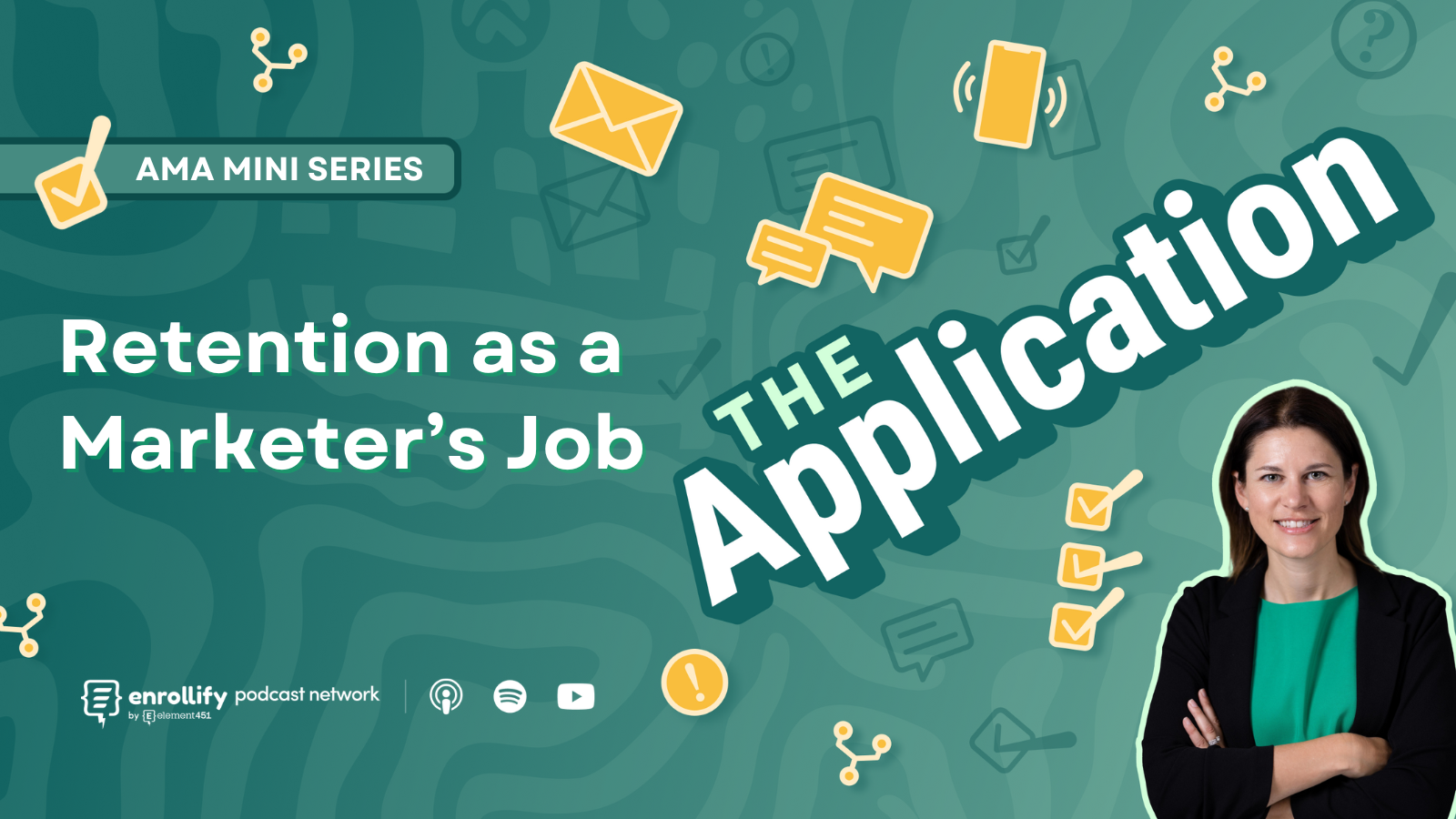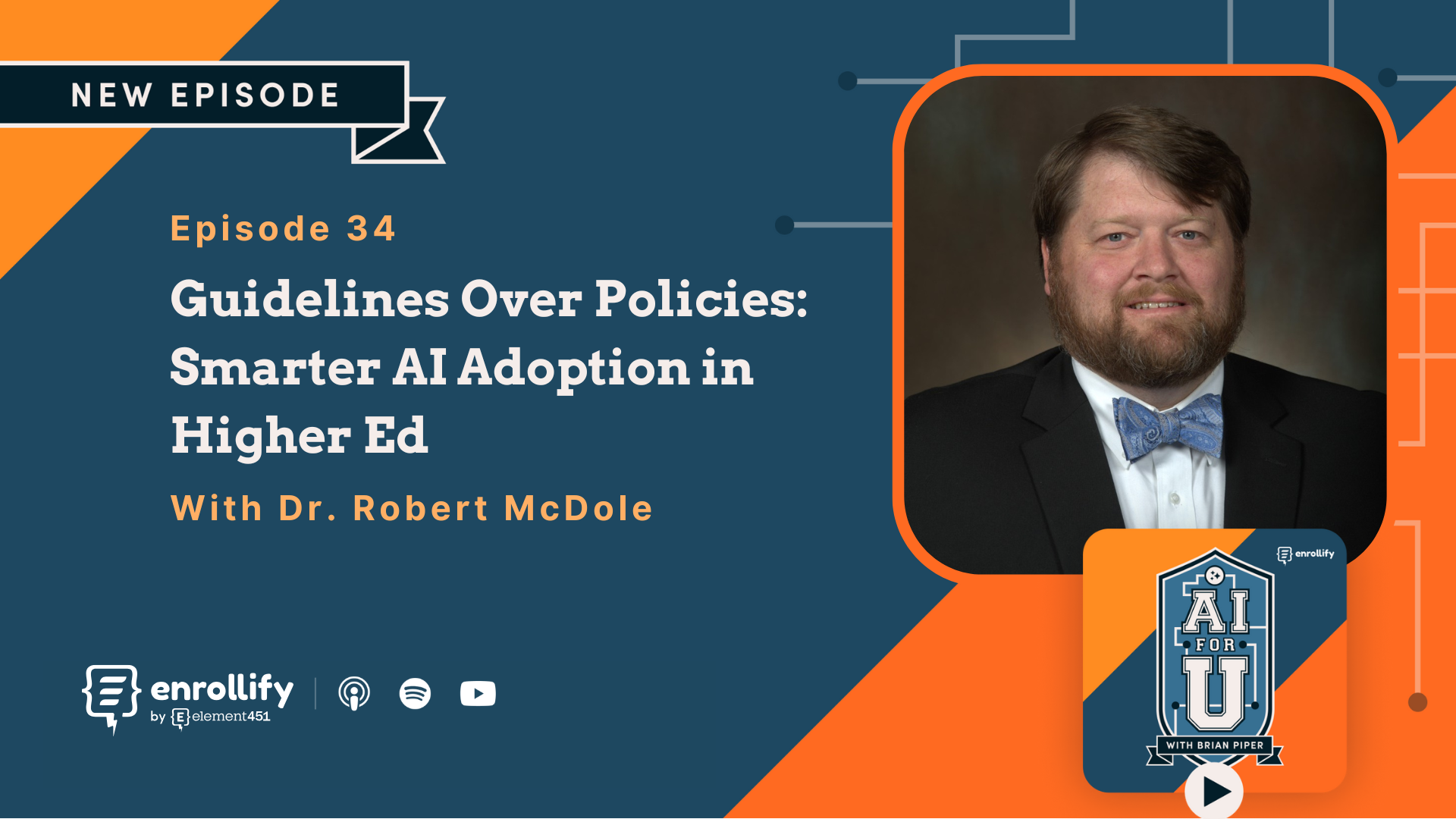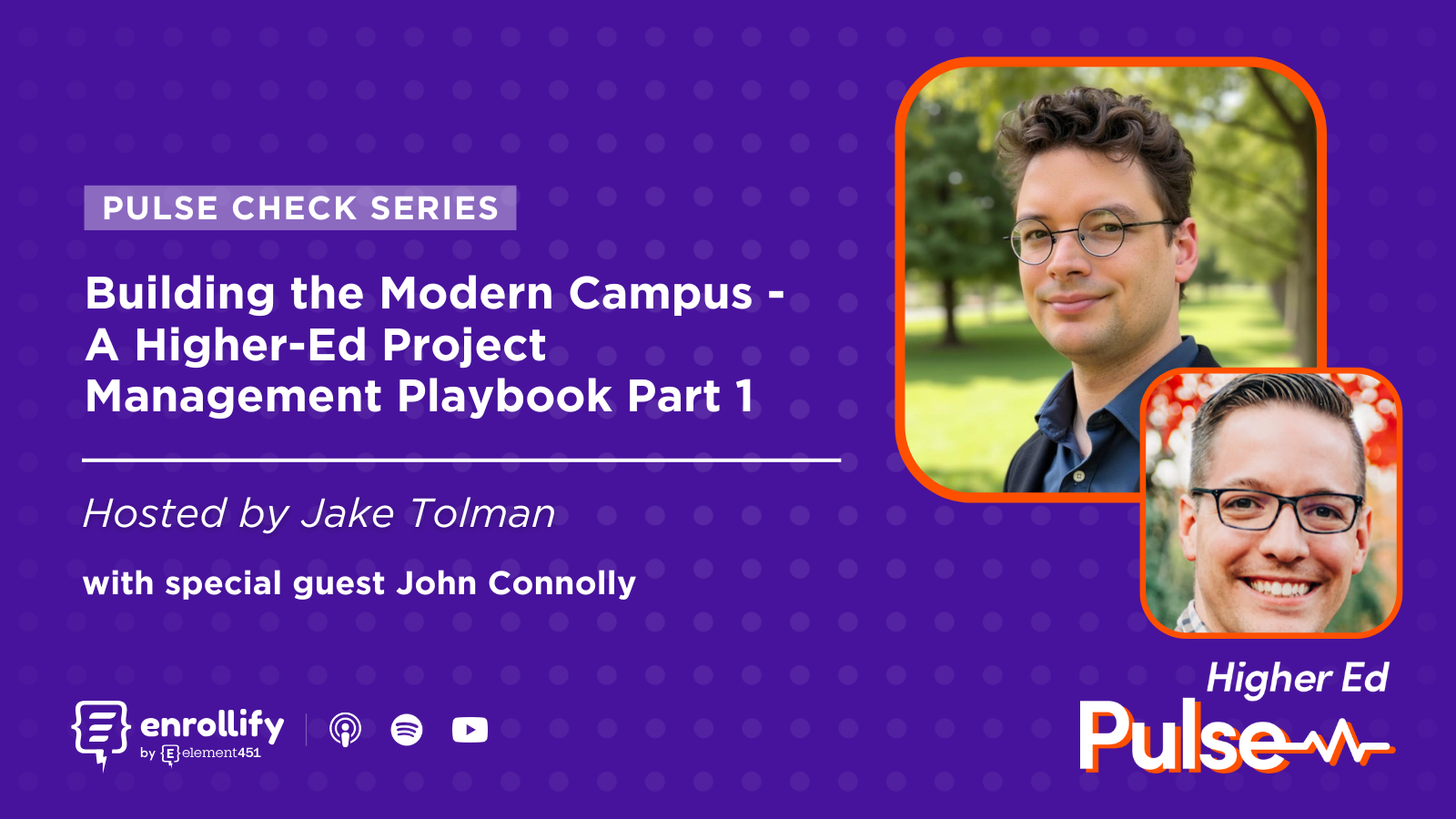About the Episode
In this episode of Confessions of a Higher Ed CMO, Jaime talks with Renee Seltzer, Marketing Growth Agency Owner (Ellison Ellery) and Fractional CMO, about creating customer journey maps. Creating a journey map can help your institution understand the steps a student takes as they enroll and matriculate. They can be incredibly valuable in identifying – and ultimately fixing – friction points that could cause a student to stop the enrollment process. Higher ed leaders who take equity seriously will also find value in this conversation. Takeaways from this episode include:
- An introduction to journey maps
- Tips for creating your own journey maps, including identifying resources
- How fixing friction points is important as students struggle with the cognitive load that came with COVID
- How artificial intelligence can improve the student journey
- Advice on using a variety of technologies to engage the modern student
- Insight into the ways our current approaches exclude historically marginalized populations
Learn more about Ellison Ellery Consulting here!
What Is a Student Journey Map and Why Does It Matter?
A student journey map is a comprehensive tool that visualizes every interaction a student has with an institution, from initial awareness through enrollment, graduation, and beyond. Renee Seltzer explains that journey maps provide a holistic view of the student experience by breaking down silos between departments.
This process highlights friction points—like confusing tuition bills, unclear next steps, or lack of proactive communication—that can frustrate students and cause them to drop out of the enrollment pipeline. By addressing these challenges, institutions not only improve the student experience but also increase key metrics like enrollment yield and retention rates.
For example, Renee shared her personal experience as a first-generation college student who struggled to complete her FAFSA due to confusing and overwhelming instructions. She nearly gave up, not because she lacked capability but because the process eroded her confidence. Her story illustrates the importance of creating smooth, supportive experiences, especially for underserved student populations.
How to Build a Student Journey Map
Step 1: Start with a Champion
Creating a student journey map requires buy-in and collaboration across departments. Renee recommends finding an internal advocate or champion who can organize meetings and help set the stage for the project. This person will facilitate cross-departmental cooperation and keep the focus on the student experience.
Step 2: Map Each Step of the Journey
Begin by documenting every touchpoint a student has with the institution. This includes:
- Marketing and Awareness: What channels drive inquiries? Are the website and request-for-information forms intuitive and effective?
- Application Process: Are the forms clear and mobile-friendly? Are unnecessary questions being asked?
- Financial Aid: How long does it take for students to receive responses? Is communication jargon-free and supportive?
- Matriculation: Are students clear on their next steps after being admitted? Are deadlines consistent across departments?
Use tools like Miro to visualize the journey and include details such as:
- Who “owns” each step of the process?
- What systems are used? Are they automated or manual?
- How long does each step take, and where do students typically fall through the cracks?
Step 3: Analyze and Solve
Once the journey is mapped, identify areas where students are dropping out or expressing frustration. For example:
- Are students overwhelmed by lengthy, confusing emails?
- Is the application process mobile-friendly?
- Are there delays in processing financial aid forms due to manual workflows?
Start small by focusing on a single area, such as financial aid, and iteratively improve processes. Use metrics like yield rates, retention rates, and Net Promoter Scores (NPS) to measure the impact of your changes.
The Role of Marketing in Student Journey Mapping
Renee argues that marketing leaders are uniquely positioned to lead student journey mapping efforts because they are already focused on delivering an exceptional brand experience. Marketers are skilled at thinking like end users, analyzing processes holistically, and advocating for improvements across the student lifecycle.
For example, CMOs can:
- Collaborate with financial aid and student accounts to create clear, student-friendly communications.
- Advocate for the use of CRMs and AI chatbots to deliver timely, personalized messages that reduce confusion.
- Lead efforts to audit processes from the student’s perspective, ensuring every step is intuitive and aligned with the institution’s brand.
Success Stories and Results
Jamie shared how implementing a student journey map led to significant improvements at a previous institution. By simplifying the enrollment process, aligning communications across departments, and introducing AI chatbots and text messaging, her team achieved:
- A 36% reduction in inbound phone calls with questions.
- An 8% increase in freshman yield.
- A 74% increase in bills paid on time.
Renee also highlighted examples of universities that have improved their processes, such as using text messaging to engage students and suppressing irrelevant communications for online students. These small changes can have a massive impact on enrollment and retention.
Overcoming Challenges
Journey mapping is a daunting task, and resistance from departments can derail progress. Renee emphasizes the importance of leadership buy-in, clear goals, and an unwavering focus on the student experience. To succeed, institutions must:
- Measure the financial impact of improvements, such as increased tuition revenue.
- Foster a culture of innovation and collaboration.
- Be willing to invest in IT and staffing to support necessary changes.
Confessions of a Higher Ed CMO is sponsored by our friends at Mindpower - a full-service marketing and branding firm celebrating nearly thirty years of needle-moving, thought-provoking, research-fueled creative and strategy. Mindpower is women-founded and owned, WBENC certified, nationally recognized, and serves the social sector – higher education, healthcare, non-profits, and more. The Mindpower team is made up of strategists, storytellers, and experience creators. From market research to brand campaigns to recruitment to fundraising, the agency exists to empower clients, amplify brands, and help institutions find a strategic way forward. Learn more about Mindpower here!
Confessions of a Higher Ed CMO is a part of the Enrollify Podcast Network. If you like this podcast, chances are you’ll like other Enrollify shows too!
Our podcast network is growing by the month and we’ve got a plethora of marketing, admissions, and higher ed technology shows that are jam packed with stories, ideas, and frameworks all designed to empower you to be a better higher ed professional. Our shows feature a selection of the industry’s best as your hosts. Learn from Mickey Baines, Zach Busekrus, Jeremy Tiers, Corynn Myers, Jaime Gleason and many more.
Learn more about The Enrollify Podcast Network at podcasts.enrollify.org. Our shows help higher ed marketers and admissions professionals find their next big idea — come and find yours!















